
Supplier
Relationship Management (SRM):
Case Examples: Supply Industry Benchmarking
Introduction
Supply Industry Benchmarking is an important element of a best practise Supplier Relationship Management approach. With the objective understanding of where a supplier stands in terms of its competitiveness compared to its peers in the industry which supply industry benchmarks provide , informed decisions can be made about what to do to close any performance gaps.
Industry
Sub-Contract Aerospace Machining Suppliers
Client
Major Aerospace Systems Group
The slides below show how information from e-RFIs can be used to benchmark supply industries.
This particular example was drawn up to illustrate just how diverse two suppliers in exactly the same industry can be and the impact that this can have on their business performance and longevity.
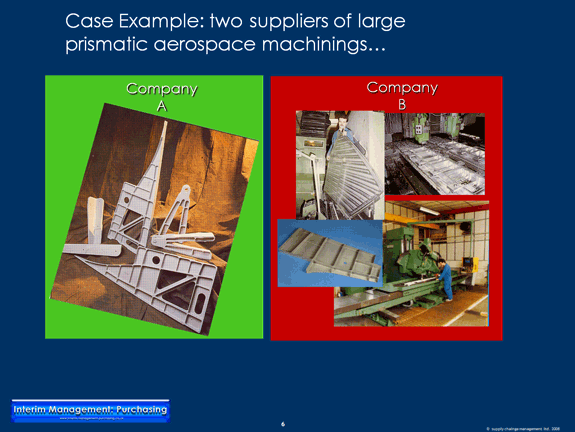
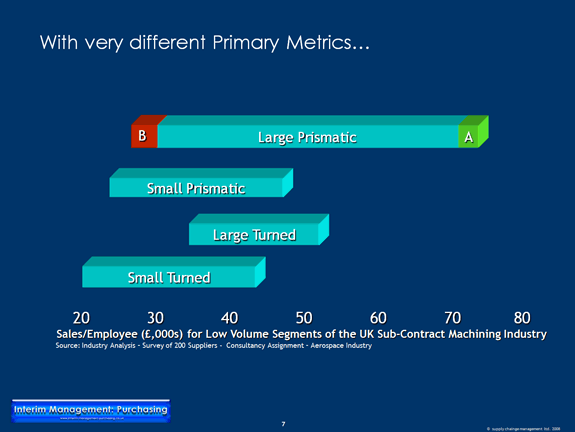
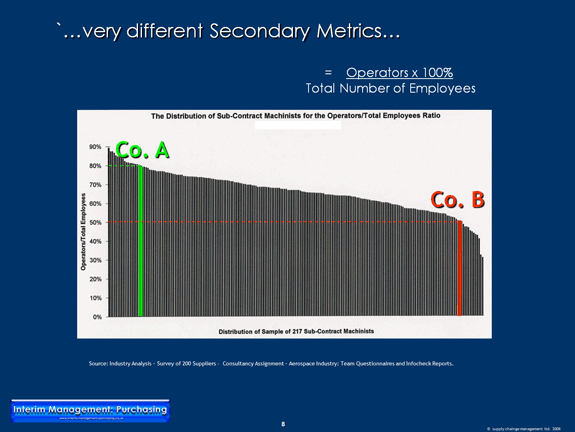
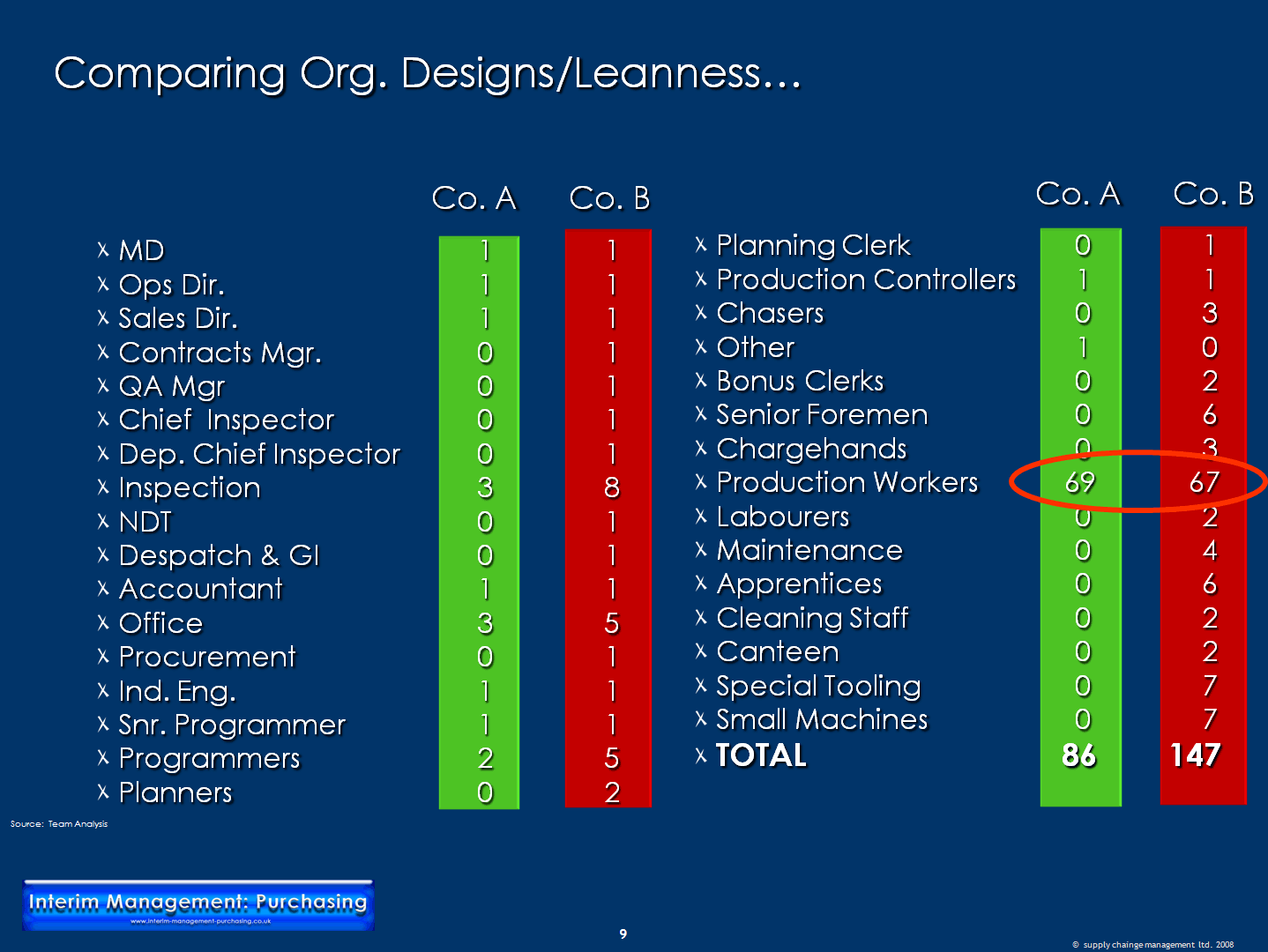
So, despite the fact that both Supplier A and Supplier B have (on the whole) the same number of CNC machine operators (shown as "Production Workers" in the above slide), and arguably therefore could produce similar values of product/output, Supplier B used ~60 more employees than Supplier A to do so.
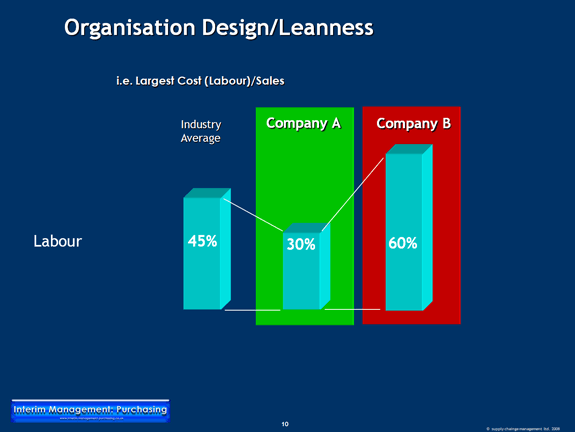
So what impact did this have on the business' performance? Very simply, Supplier A was extraordinarily profitable, whilst Supplier B was on the verge of administration.
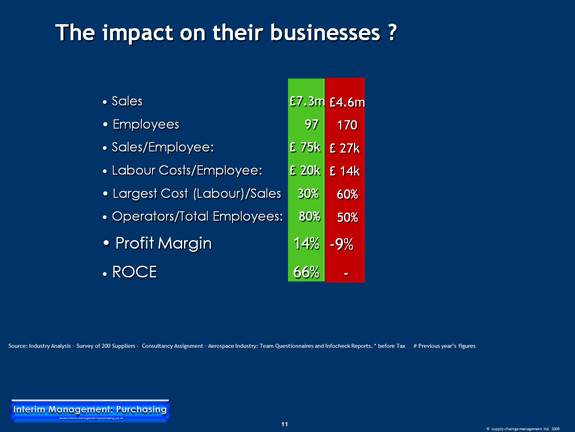
Benchmarking data such as this can be a powerful influencing tool with suppliers. The data which was used to illustrate the performance differences between the two suppliers above, was used to help one of the client's main sub-contract machining suppliers reduce their direct labour costs by 10% in just four weeks. Simply allowing the supplier to see where they stood against their peers in the industry - facilitated rapid change.

If the performance of the incumbent supplier is already achieving best in class standards, then supplier relationship management (SRM) scorecards, can be used to encourage further continuous improvement. See the following example of a Supplier Relationship Management (SRM) Scorecard for a Hard FM supplier, which was chosen specifically because the relationship with the supplier was particularly complex to characterise. Scorecards can be designed in such a way that the results are comparable to those from other indirect suppliers, so that competition can be encouraged.
However, as the above slide deck shows, even within a small subset of just one industry, the performance of some suppliers can be alarmingly below par. If switching costs are high, then scorecards may not be able to close the gap rapidly enough. Under such circumstances a more appropriate course of action may be a formal supplier diagnostic project to determine what specific actions would be in both parties' interest.
Depending upon the outcome of this, one potential route forward is a joint multi-disciplinary supplier Intervention project, which would typically be deployed as a joint multi-disciplinary project team, supported by Lean Six Sigma expertise tasked specifically to close the identified performance gaps.
More Supplier Relationship Management (SRM) Information
© www .interim-management-purchasing.co.uk June 2012
|

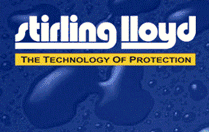
A global leader in the polymer engineering protection of civil engineering structures.
“David was appointed in the role of Interim Group Procurement Director"
"Using the Ariba e-Sourcing platform, David was then able to demonstrate the effectiveness of this practise with a 22% saving in this chemical category"
"I wouldn't hesitate to recommend David's services to any company".
Full SL plc reference  |

